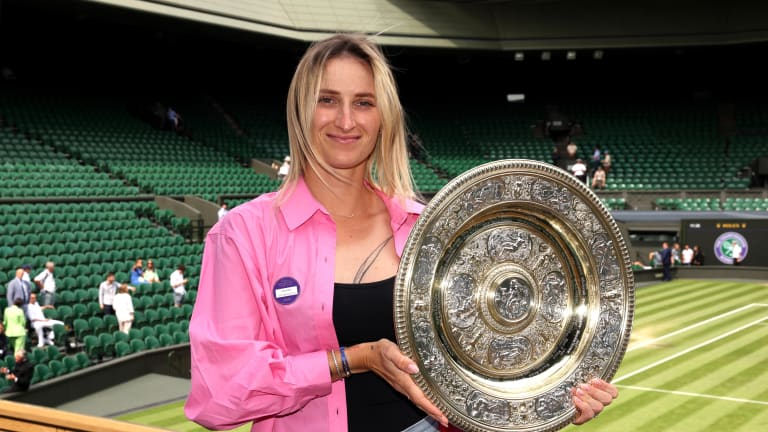Wimbledon
The battle for No. 1 & more: Four WTA takeaways from the Wimbledon fortnight
By Jul 17, 2023Wimbledon
Darren Cahill: Jannik Sinner watches more Carlos Alcaraz matches than he does with any other player
By Jul 14, 2025Wimbledon
Jannik Sinner reignites Carlos Alcaraz rivalry with Wimbledon victory
By Jul 14, 2025Wimbledon
Jannik Sinner reversed his usual pattern against Carlos Alcaraz. It won him Wimbledon
By Jul 14, 2025Wimbledon
Veronika Kudermetova and Elise Mertens win women's doubles title at Wimbledon
By Jul 13, 2025Wimbledon
Joy to the World: What Carlos Alcaraz has, and what we are enjoying
By Jul 13, 2025Wimbledon
Iga Swiatek keeps surprising herself after Wimbledon title caps "surreal" turnaround on grass
By Jul 12, 2025Wimbledon
Iga Swiatek wins first Wimbledon, sixth Grand Slam title with 6-0, 6-0 rout of Amanda Anisimova
By Jul 12, 2025Wimbledon
Wimbledon men's final preview: Will Carlos Alcaraz, Jannik Sinner share another epic?
By Jul 12, 2025Wimbledon
Julian Cash, Lloyd Glasspool become first all-British pair to win Wimbledon men's doubles title since 1936
By Jul 12, 2025The battle for No. 1 & more: Four WTA takeaways from the Wimbledon fortnight
Plus: the latest in a line of Czech champions, and the pressures that come when players play for something bigger than themselves.
Published Jul 17, 2023
Advertising
Advertising
Advertising

Jabeur was disconsolate after losing the Wimbledon final for the second year in a row, so eager to make her nation and region proud.
© © TENNIS PHOTO NETWORK
Advertising

Vondrousova is the first unseeded woman to win Wimbledon in the Open Era.
© Getty Images